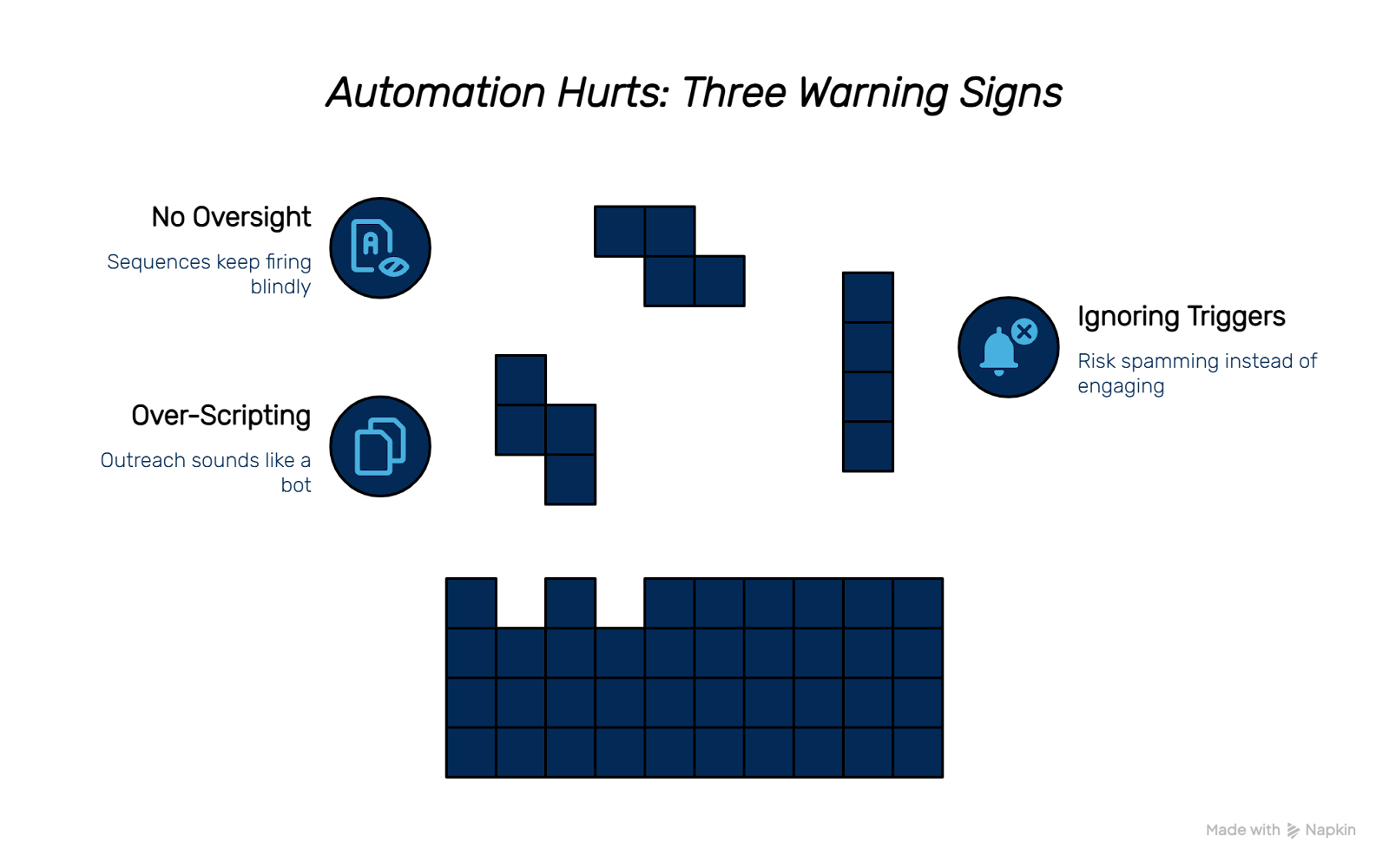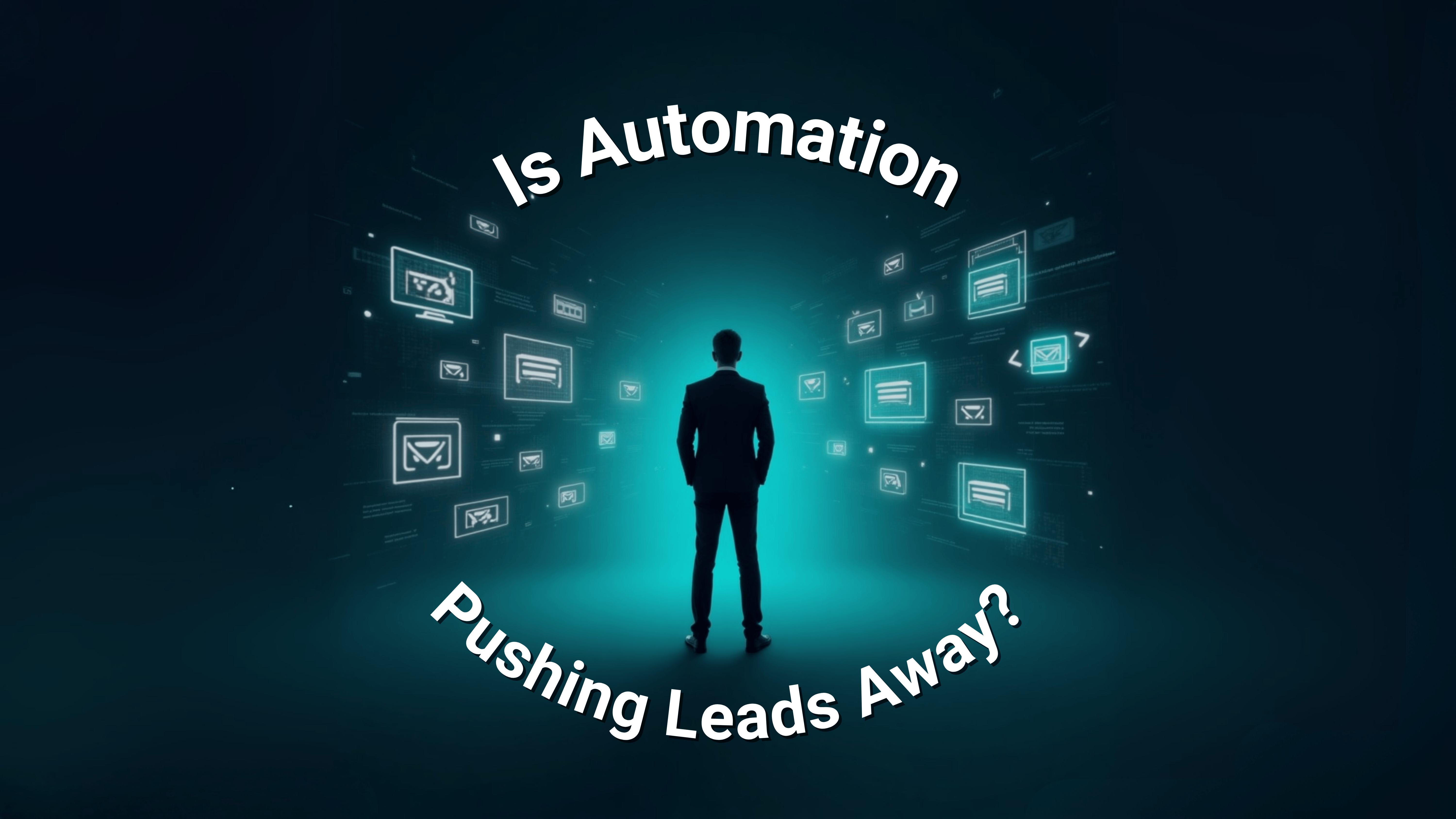Automation was supposed to make sales easier. Fewer manual tasks, more consistent outreach, better scaling of your pipeline. But here’s the hard truth: when done poorly, automation doesn’t pull prospects closer, it pushes them away.
If your sequences feel robotic, your timing ignores context, or your system keeps chasing people who’ve already replied, you’re not building relationships. You’re breaking them.
Why Automation Backfires
Most teams believe that more automation equals more efficiency. But when sales automation runs unchecked, it often creates friction instead of engagement.
Prospects don’t want to feel like entries in a spreadsheet. They want to feel like people. And when your outreach looks copy-pasted or your follow-ups collide with their inbox at the wrong time, they stop seeing you as credible. They see you as noise.
This isn’t just a technology problem. It’s a customer experience problem.
The Three Warning Signs Your Automation Is Hurting
1. Over-Scripting Every Step
If every touchpoint sounds identical, prospects know it’s not you writing. Outreach loses its authenticity the moment it reads like a bot.

2. Ignoring Behavioural Triggers
Not all prospects deserve the same sequence. If someone clicks, replies, or even ignores three times in a row, your automation should adapt. Without behaviour-based triggers, you risk spamming instead of engaging.
3. No Human-in-the-Loop
Pure automation runs blind. Without human oversight, sequences keep firing after a reply or miss the nuance of a prospect’s objection. That’s when trust breaks down.
The Ethical AI Question
There’s also an ethical AI angle here. Should automation keep pushing until someone unsubscribes? Should it fake personalisation with merge fields that don’t mean anything?
Ethical automation respects attention. It builds rapport by being considerate, timely, and relevant, not overwhelming. AI should assist, not manipulate.
How to Make Automation Work for You
If you want automation that nurtures instead of annoys, focus on three principles:
- Behaviour-Based Orchestration → Trigger next steps based on what prospects actually do, not just a fixed schedule.

- Human-in-the-Loop → Use automation for scale, but step in personally when engagement signals show up.
- Customer-Centric Design → Every automated touchpoint should feel like it adds value to the prospect engagement journey.
This shift isn’t about reducing automation. It’s about using it wisely, to create conversations, not just campaigns.
If you'd like to know more about this or just share your thoughts, email us at info@linkenite.com, and we can connect for a quick chat.









.png)
.png)
.png)
.png)
.png)
.png)
.png)
.png)
.png)
.png)
.png)
.png)

.png)
.png)
.png)
.png)





.png)
.png)

.png)









.jpg)

.jpg)
.jpg)


.png)









.png)

.png)
.png)
.png)






.png)
%20(2).png)
.png)
.png)





.png)

.png)


.png)


.png)




.png)



%20BLOG%20BANNER.png)




.png)